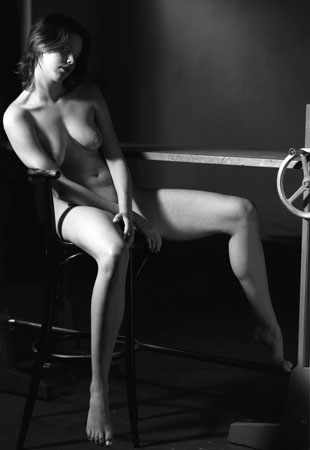 Black-and-white images, and monochromatic images in general, depend to a large extent upon the distribution of tones to convey the impression of depth. They cannot record a figure as the eye sees it since they are abstractions taken from the coloured reality of the world. Nevertheless, the removal or reduction of colour information can have a significant and beneficial effect upon our perception of a subject.
Black-and-white images, and monochromatic images in general, depend to a large extent upon the distribution of tones to convey the impression of depth. They cannot record a figure as the eye sees it since they are abstractions taken from the coloured reality of the world. Nevertheless, the removal or reduction of colour information can have a significant and beneficial effect upon our perception of a subject.
Colours alter the mood of an image in a significant way. Warm reds and golden tones give a feeling quite different from cooler blues and greens, and strong colours distract the eye. Consequently, when colour is removed, the brain’s interpretation of what the eye sees is subtly altered – perhaps to the extent that the centre of interest changes. To achieve an adequate understanding of a monochromatic image the eye must extract more from the limited information available. We therefore concentrate to a greater extent upon shape, form, pattern and tonal gradation, and sensitivity to these aspects is enhanced.
Images of the nude depend heavily upon more or less the same fundamental aspects – shape, form, tonal gradation and texture. Indeed, photographers go to great lengths to create or find soft directional light that reveals these essential elements. Monochromatic media are consequently well suited to nude work.
Traditional black-and-white photographs also have the advantage that numerous darkroom processes can be used to transform them after they have been captured. Tones can be changed more than is possible with colour, contrast can be increased or decreased, and various grades of chemical or digital-printing paper can be used to produce quite different effects. Digital techniques have changed this situation to some extent, but the underlying truth remains.






